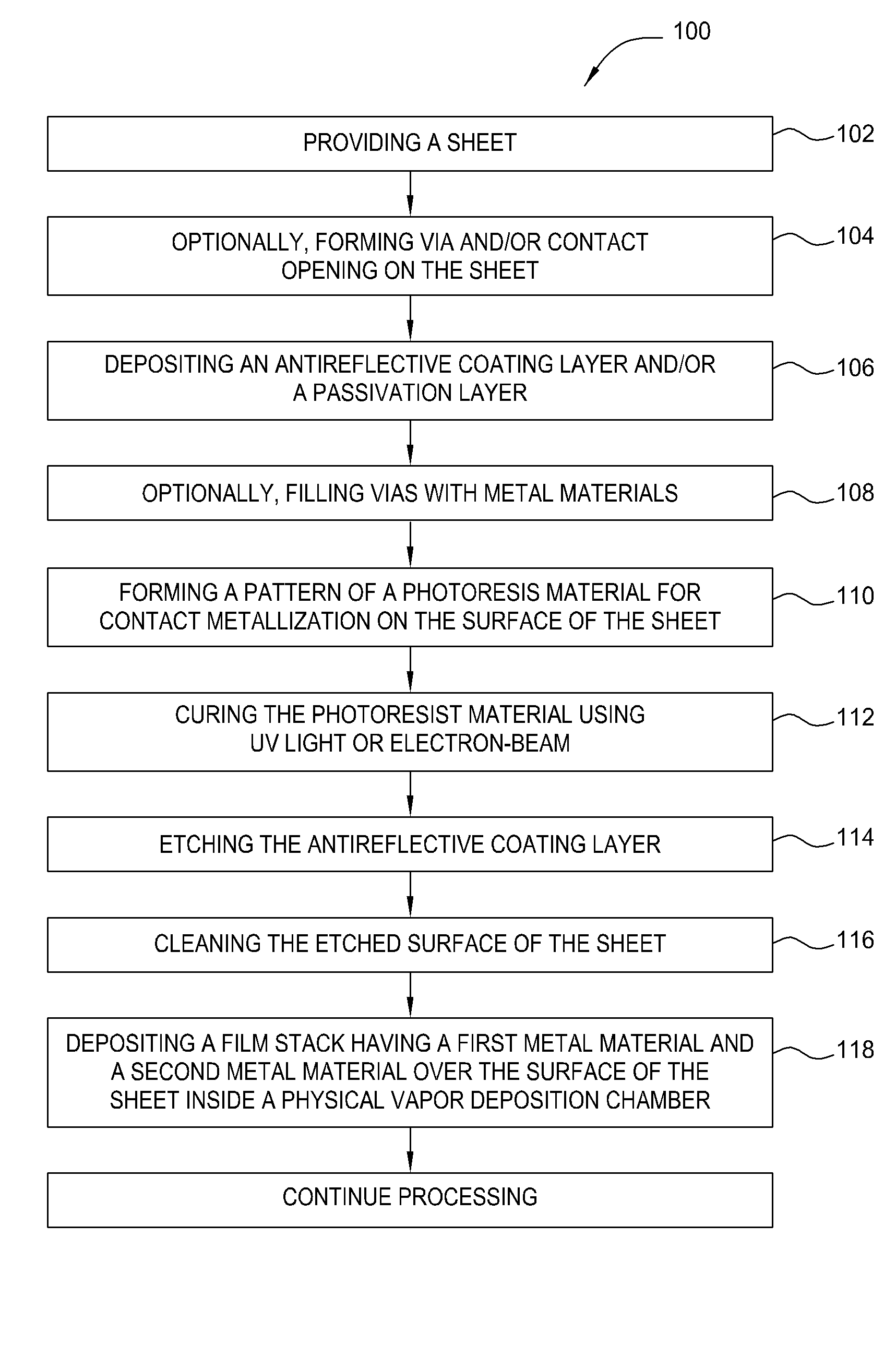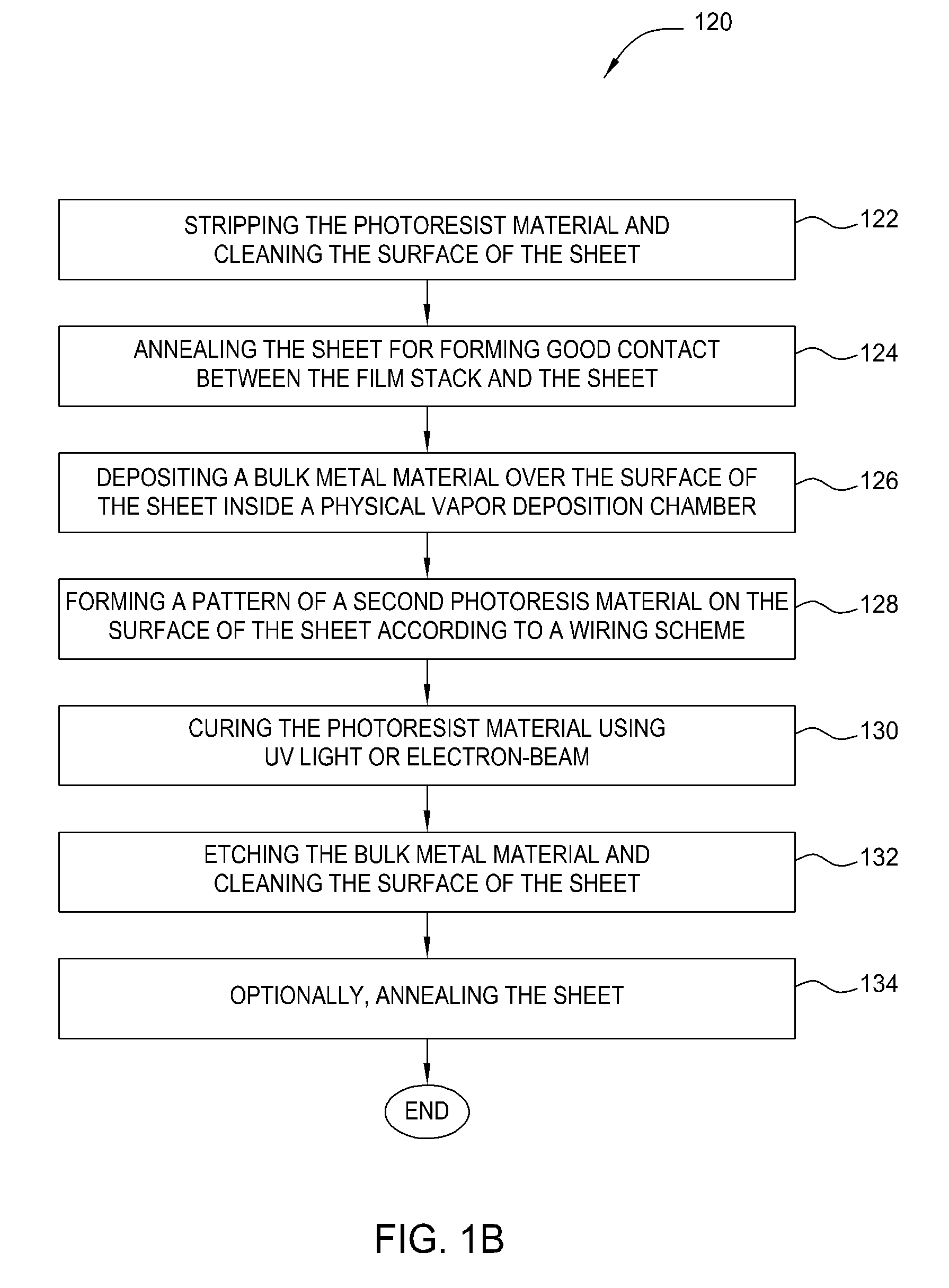Photovoltaic contact and wiring formation
a photovoltaic and contact technology, applied in the direction of resistive material coating, chemical vapor deposition coating, metallic material coating process, etc., can solve the problems of low contact resistance to silicon, low contact resistance to silver or aluminum thick films formed by coarser metallization techniques, and direct affecting the performance and lifetime of final pv systems. , to achieve the effect of enhancing chemical vapor deposition and reducing contact resistan
- Summary
- Abstract
- Description
- Claims
- Application Information
AI Technical Summary
Benefits of technology
Problems solved by technology
Method used
Image
Examples
Embodiment Construction
[0028] The present invention provides a novel approach for fabricating a solar cell and forming contact metallization and wiring on a solar cell sheet. In one embodiment, sputtering is used to deposit a thin film of metal materials on the solar cell sheet for forming metal contacts. In an alternative embodiment, electroplating or electroless deposition is used to selectively forming metal contact at high aspect ratio. In another embodiment, contact metallization and wiring formation are performed on the front side and / or the back side of a sheet using methods and apparatuses of the invention.
[0029]FIG. 1A depicts a process flow diagram illustrating one method 100 according to one exemplary embodiment of the invention. At step 102, a substrate or a silicon sheet is provided for forming contact and wiring thereon according to a predetermined wiring scheme. The substrate or sheet of the invention can be any of the starting materials suitable for PV cell and solar module fabrication, e...
PUM
| Property | Measurement | Unit |
|---|---|---|
| thickness | aaaaa | aaaaa |
| thickness | aaaaa | aaaaa |
| thickness | aaaaa | aaaaa |
Abstract
Description
Claims
Application Information
 Login to View More
Login to View More - R&D
- Intellectual Property
- Life Sciences
- Materials
- Tech Scout
- Unparalleled Data Quality
- Higher Quality Content
- 60% Fewer Hallucinations
Browse by: Latest US Patents, China's latest patents, Technical Efficacy Thesaurus, Application Domain, Technology Topic, Popular Technical Reports.
© 2025 PatSnap. All rights reserved.Legal|Privacy policy|Modern Slavery Act Transparency Statement|Sitemap|About US| Contact US: help@patsnap.com



